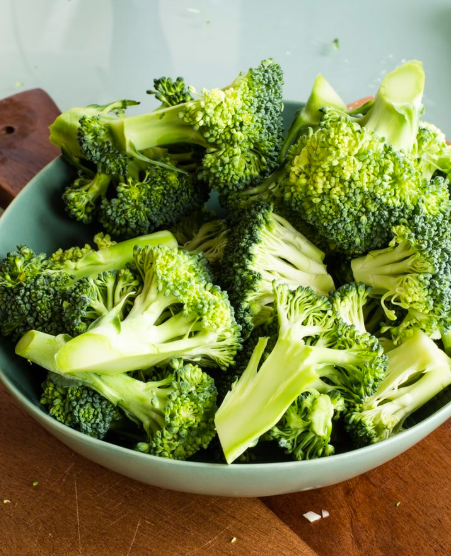
Top 8 Nutrient-Dense Vegetables You Should Add to Your Diet
Vegetables play a crucial role in maintaining good health, yet many people still fall short of meeting the recommended intake. According to the Dietary Guidelines for Americans, most individuals fail to consume enough vegetables daily. However, studies reveal that a diet rich in vegetables can help improve various aspects of health, including blood pressure, digestive function, blood sugar, and vision. Additionally, vegetables are linked to a reduced risk of heart disease and certain types of cancer.
Despite knowing that vegetables are beneficial, many struggle to include enough of them in their daily meals. Let’s explore the healthiest vegetables to eat and discover easy ways to increase your vegetable consumption.
1. Spinach
Ranked as one of the healthiest vegetables, spinach, along with other dark leafy greens like kale and Swiss chard, is packed with essential nutrients. Spinach is loaded with vitamins A, C, K, calcium, iron, and potassium. It also provides antioxidants such as lutein, zeaxanthin, and beta-carotene. Eating leafy greens like spinach regularly is known to reduce the risk of heart disease and diabetes. Additionally, spinach contains compounds that can help lower cholesterol, blood sugar, and blood pressure.
2. Broccoli
Broccoli belongs to the cruciferous vegetable family, which includes cauliflower, cabbage, kale, and Brussels sprouts. These vegetables offer powerful health benefits, such as reducing the risk of heart disease and cancer. Cruciferous vegetables contain sulforaphane, a compound that helps inhibit cancer cell growth. Broccoli also supports bone health, thanks to its vitamin K and calcium content.
3. Carrots
Carrots are rich in beta-carotene, a powerful antioxidant that plays a key role in eye health. Consuming carrots can reduce the risk of macular degeneration, night blindness, and glaucoma. In addition to supporting vision, carrots provide fiber, which helps reduce cholesterol and blood pressure while also lowering the risk of heart disease, strokes, and type 2 diabetes.
4. Beets
Beets are packed with antioxidants, including anthocyanins, lutein, zeaxanthin, and betaine. These nutrients offer anti-inflammatory properties and protect against various types of cancer. Beets also provide essential minerals like iron, copper, and potassium, along with B vitamins such as folic acid. Their high fiber content also helps lower cholesterol levels.
5. Asparagus
Asparagus is a highly nutritious vegetable with antioxidant properties that provide anti-cancer and anti-inflammatory benefits. It is a rich source of chromium, which helps improve insulin sensitivity and regulate blood sugar, making it an excellent choice for individuals with type 2 diabetes. Asparagus also acts as a natural diuretic, which can help reduce high blood pressure.
6. Butternut Squash
Butternut squash is a winter squash that is especially high in vitamin A, which is essential for immune function and eye health. The antioxidants found in butternut squash help reduce inflammation and protect against skin cancer. This vegetable is also beneficial for maintaining healthy skin and hair, thanks to its abundance of vitamin A and other antioxidants.
7. Garlic
Garlic is widely used for its distinct flavor and numerous health benefits. It is rich in minerals like potassium, iron, and zinc, and contains allicin, a compound known for its antimicrobial and anti-inflammatory properties. Garlic has been shown to improve blood pressure, regulate blood sugar, and lower cholesterol levels. Additionally, it can reduce the risk of blood clots and support digestive health due to its prebiotic effects.
8. Green Peas
Green peas are often overlooked, but they are a nutrient-dense vegetable that provides a great source of plant-based protein and fiber. A half-cup serving of peas contains over 4 grams of fiber and protein. As a low glycemic food, peas help regulate blood sugar levels, making them a good choice for individuals with diabetes. The fiber in peas also promotes digestive health and alleviates constipation.
How to Increase Your Vegetable Intake
While knowing which vegetables are the healthiest is a great start, it’s important to also understand how to incorporate more of them into your daily diet. One serving of vegetables is typically equivalent to 1 cup of cooked or raw vegetables or 2 cups of leafy greens. Most adults need between two and four servings of vegetables each day to meet their nutritional needs.
Here are a few tips for making vegetables a regular part of your meals:
-
Plan Your Meals: To avoid wasting vegetables, shop with a meal plan in mind. Knowing which dishes you’ll prepare helps ensure that you’ll actually eat the vegetables you buy. Planning meals also reduces the temptation to opt for takeout.
-
Prep Ahead: Save time during the week by preparing vegetables in advance. Pre-cut veggies or buy pre-chopped options to make cooking more convenient. If you have the time, spend a few minutes after grocery shopping to chop and store veggies for easy access.
-
Try New Vegetables: If you’re not fond of certain vegetables, experiment with different cooking methods and try new vegetables. Roasting, grilling, or adding flavorful seasonings can enhance the taste of vegetables you might otherwise avoid.
-
Grow Your Own: If you have the space and interest, growing your own vegetables can be a fun and rewarding way to increase your intake. Start with easy-to-grow options like zucchini, lettuce, or tomatoes.
Conclusion
Eating more vegetables can significantly improve your overall health. By incorporating nutrient-dense vegetables like spinach, broccoli, and carrots into your diet, you’ll benefit from better heart health, improved digestion, and enhanced immunity. Use the tips above to find creative and convenient ways to include more vegetables in your daily meals and enjoy the many benefits they provide.




